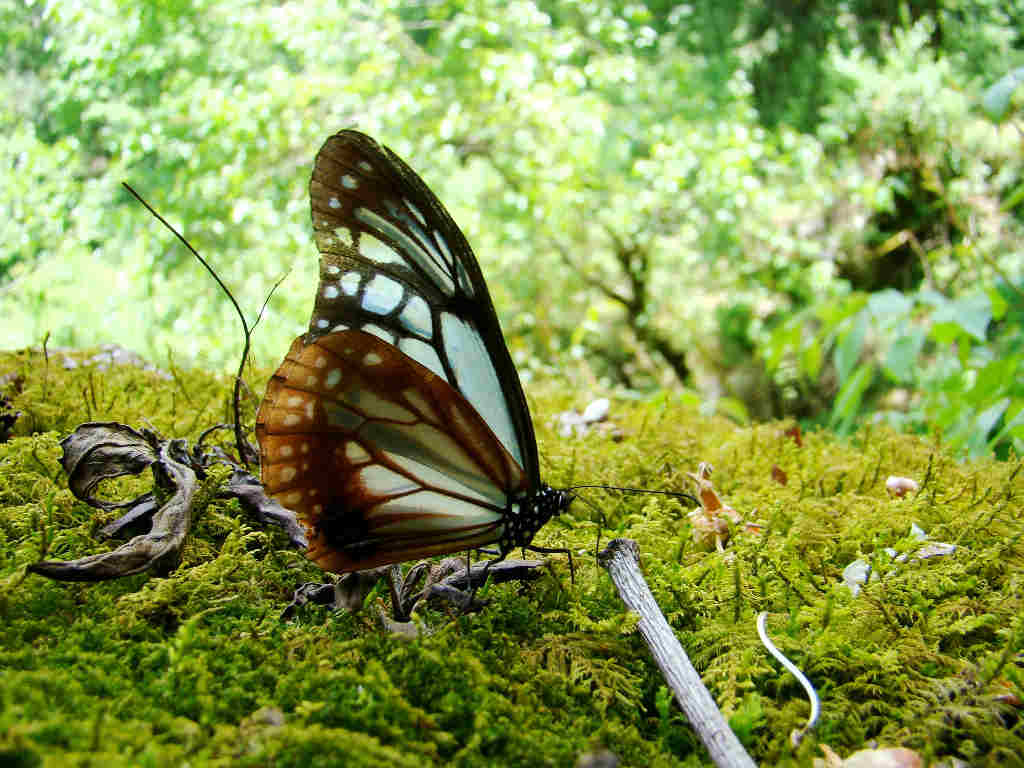
Parantica sita sita (Chestnut Tiger)
Parantica sita sita, commonly known as the Himalayan Chestnut Tiger, is a striking butterfly species found in the subalpine and temperate zones of the Great Himalayan National Park (GHNP). With its delicate structure and slow, gliding flight, this butterfly is often seen drifting gracefully along forest trails, meadows, and clearings.
| Common Name | Himalayan Chestnut Tiger |
| Scientific name |
Parantica sita sita |
| Family | Nymphalidae |
| Description |
This butterfly is easily identified by its translucent pale blue wings that are webbed with thick black veins and borders. The hindwings often show a hint of chestnut color, giving the species its common name. These visual traits make Parantica sita sita one of the most photogenic butterflies in the Himalayan region. In GHNP, the species thrives between 1,500 and 2,800 meters above sea level. It prefers moist forested habitats, especially those rich in flowering plants and shrubs. Adult butterflies feed on nectar from a variety of wildflowers, especially those from the aster and milkweed families. Interestingly, males of this species are also known to sip from wet soil and animal droppings to gather essential minerals—a behavior known as mud-puddling. The life cycle of Parantica sita sita begins with eggs laid on specific host plants, mostly from the Apocynaceae family. The caterpillars are usually striped in black and white, offering them some protection through camouflage and warning coloration. As a member of the Danaid group of butterflies, Parantica sita sita plays an important role in pollination. Its presence within GHNP reflects the park’s robust biodiversity and the ecological health of its forested zones. Conservation of such species within GHNP ensures the survival of not just butterflies, but the broader web of life they support—linking plants, insects, and other wildlife into a balanced and thriving ecosystem. |



